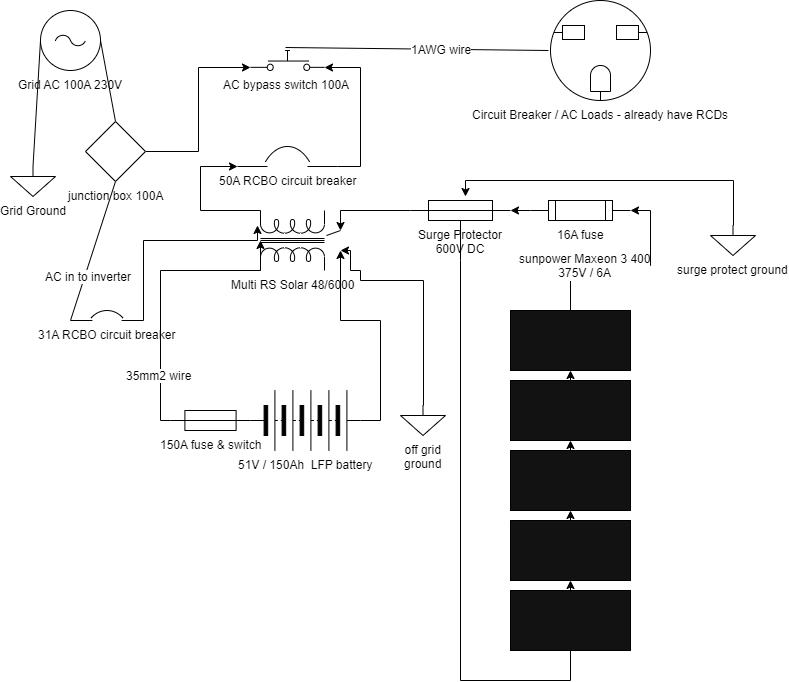Hello everyone.
I'm just setting up my first victron based domestic system in a flat in London. I've made the following "design setup" ... can you critique it?
Since I'll be running "off grid with AC input" - i.e. no feedback to grid possible. I don't need a DNO declaration (as far as I know!).
I decided to mate the high-voltage Maxeon3-400 Panels (5 panel string) with the high voltage Multi RS-Solar 48/6000... hoping to achieve decent efficiency from dawn till dusk... time will tell if it works out. 
